Determination of neurotensin projections to the ventral tegmental area in mice
- PMID: 29478718
- PMCID: PMC5906039
- DOI: 10.1016/j.npep.2018.02.003
Determination of neurotensin projections to the ventral tegmental area in mice
Abstract
Pharmacologic treatment with the neuropeptide neurotensin (Nts) modifies motivated behaviors such as feeding, locomotor activity, and reproduction. Dopamine (DA) neurons of the ventral tegmental area (VTA) control these behaviors, and Nts directly modulates the activity of DA neurons via Nts receptor-1. While Nts sources to the VTA have been described in starlings and rats, the endogenous sources of Nts to the VTA of mice remain incompletely understood, impeding determination of which Nts circuits orchestrate specific behaviors in this model. To overcome this obstacle we injected the retrograde tracer Fluoro-Gold into the VTA of mice that express GFP in Nts neurons. Identification of GFP-Nts cells that accumulate Fluoro-Gold revealed the Nts afferents to the VTA in mice. Similar to rats, most Nts afferents to the VTA of mice arise from the medial and lateral preoptic areas (POA) and the lateral hypothalamic area (LHA), brain regions that are critical for coordination of feeding and reproduction. Additionally, the VTA receives dense input from Nts neurons in the nucleus accumbens shell (NAsh) of mice, and minor Nts projections from the amygdala and periaqueductal gray area. Collectively, our data reveal multiple populations of Nts neurons that provide direct afferents to the VTA and which may regulate specific aspects of motivated behavior. This work lays the foundation for understanding endogenous Nts actions in the VTA, and how circuit-specific Nts modulation may be useful to correct motivational and affective deficits in neuropsychiatric disease.
Keywords: Dopamine; Fluoro-Gold; Lateral hypothalamic area; Motivation; Nucleus accumbens; Preoptic area; Retrograde tracing; Reward.
Copyright © 2018 The Authors. Published by Elsevier Ltd.. All rights reserved.
Figures
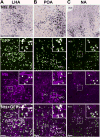
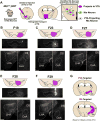


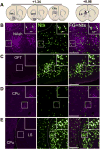
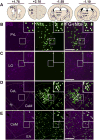



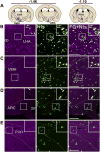
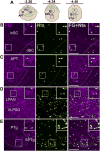
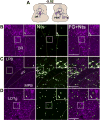

Similar articles
-
Lateral hypothalamic area neuropeptides modulate ventral tegmental area dopamine neurons and feeding.Physiol Behav. 2020 Sep 1;223:112986. doi: 10.1016/j.physbeh.2020.112986. Epub 2020 May 31. Physiol Behav. 2020. PMID: 32492498 Free PMC article. Review.
-
Ventral tegmental area neurotensin signaling links the lateral hypothalamus to locomotor activity and striatal dopamine efflux in male mice.Endocrinology. 2015 May;156(5):1692-700. doi: 10.1210/en.2014-1986. Epub 2015 Mar 3. Endocrinology. 2015. PMID: 25734363 Free PMC article.
-
Relative contributions and mapping of ventral tegmental area dopamine and GABA neurons by projection target in the rat.J Comp Neurol. 2019 Apr 1;527(5):916-941. doi: 10.1002/cne.24572. Epub 2018 Dec 11. J Comp Neurol. 2019. PMID: 30393861 Free PMC article.
-
Neurotensin immunolabeling relates to sexually-motivated song and other social behaviors in male European starlings (Sturnus vulgaris).Behav Brain Res. 2015 Apr 1;282:133-43. doi: 10.1016/j.bbr.2015.01.007. Epub 2015 Jan 13. Behav Brain Res. 2015. PMID: 25595421 Free PMC article.
-
Reward and aversion in a heterogeneous midbrain dopamine system.Neuropharmacology. 2014 Jan;76 Pt B(0 0):351-9. doi: 10.1016/j.neuropharm.2013.03.019. Epub 2013 Apr 8. Neuropharmacology. 2014. PMID: 23578393 Free PMC article. Review.
Cited by
-
Neurotensin neurons in the extended amygdala control dietary choice and energy homeostasis.Nat Neurosci. 2022 Nov;25(11):1470-1480. doi: 10.1038/s41593-022-01178-3. Epub 2022 Oct 20. Nat Neurosci. 2022. PMID: 36266470 Free PMC article.
-
Lateral hypothalamic galanin neurons are activated by stress and blunt anxiety-like behavior in mice.Behav Brain Res. 2022 Apr 9;423:113773. doi: 10.1016/j.bbr.2022.113773. Epub 2022 Jan 29. Behav Brain Res. 2022. PMID: 35101456 Free PMC article.
-
Distinct Encoding of Reward and Aversion by Peptidergic BNST Inputs to the VTA.Front Neural Circuits. 2022 Jul 4;16:918839. doi: 10.3389/fncir.2022.918839. eCollection 2022. Front Neural Circuits. 2022. PMID: 35860212 Free PMC article.
-
Lateral hypothalamic area neuropeptides modulate ventral tegmental area dopamine neurons and feeding.Physiol Behav. 2020 Sep 1;223:112986. doi: 10.1016/j.physbeh.2020.112986. Epub 2020 May 31. Physiol Behav. 2020. PMID: 32492498 Free PMC article. Review.
-
Distinct Subsets of Lateral Hypothalamic Neurotensin Neurons are Activated by Leptin or Dehydration.Sci Rep. 2019 Feb 12;9(1):1873. doi: 10.1038/s41598-018-38143-9. Sci Rep. 2019. PMID: 30755658 Free PMC article.
References
-
- Bayer VE, Towle AC, Pickel VM. Vesicular and cytoplasmic localization of neurotensin-like immunoreactivity (NTLI) in neurons postsynaptic to terminals containing NTLI and/or tyrosine hydroxylase in the rat central nucleus of the amygdala. J Neurosci Res. 1991;30:398–413. - PubMed
-
- Beaudet A, Woulfe J. Morphological substrate for neurotensin-dopamine interactions in the rat midbrain tegmentum. Ann N Y Acad Sci. 1992;668:173–185. - PubMed
-
- Beck B, Burlet A, Nicolas JP, Burlet C. Neurotensin in microdissected brain nuclei and in the pituitary of the lean and obese Zucker rats. Neuropeptides. 1989;13:1–7. - PubMed
MeSH terms
Substances
Grants and funding
LinkOut - more resources
Full Text Sources
Other Literature Sources
Molecular Biology Databases

